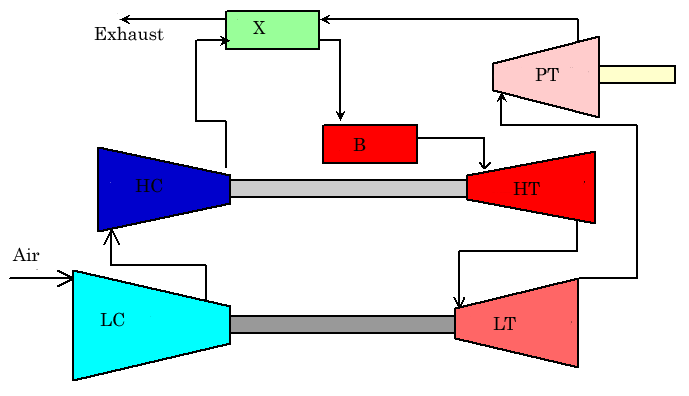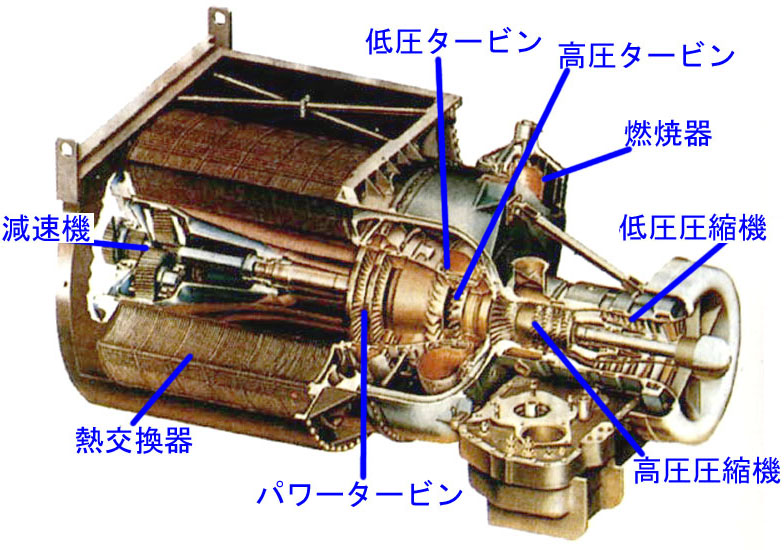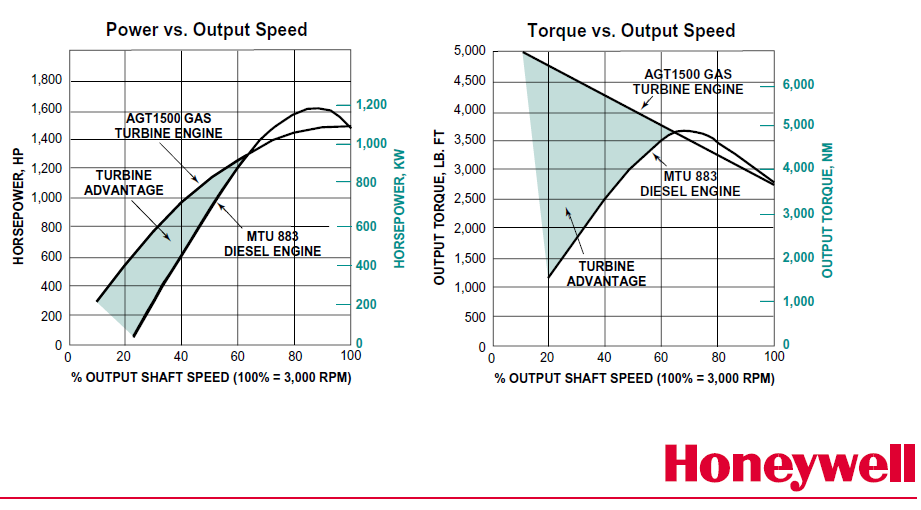|
|
Facts M1 Abrams tank revealed |
|
U.S. army's main battle tank M1 Abrams is the
only mass produced turbine powered land vehicle in the world. The
decision to use gas turbines as the power source of the main battle tank
was made in the circumstances that applying gas turbines to the tank was thought to be a wild scheme all over the world. In
Soviet Union, main battle tank T80 adopted the gas turbine as its main
power source but failed and next generation T90 was powered by diesels. AGT1500 gas turbine engineThis engine was developed by Textron Lycoming, based on the turbine technology for heavy truck engines. The engine was designed to drive vehicles directly not electrically. The engine had different features from the air use. Named as TF15 it was commercially available for industrial use and already went out of production more than 10 years ago. So that much information is available in spite of military engines. The engine structure is somewhat sophisticated, having three axis.
This engine has a tactical idle mode, specific for combat vehicles. In this mode, the engine idles at higher rpm. This is the function to compensate for the bad response of gas turbines. It takes 4 seconds to generate 90% output from the usual idling. This delay may be fatal to combat vehicles. If high idle speed is maintained, spinning up time of compressors is shortened and then the torque rise delay is shortened. The guide vane mentioned above serves to reduce the heat load of driving mechanism by setting the guide vane as the neutral position. The high speed idling causes the increase of the fuel consumption but life cannot be traded for the fuel economy.
The engine weighs 1134 kg (dry)
1.629 m in length, 0.991 m in width and 0.807 m in height and produces
1500 horse power. The size is comparably larger and 5 times
heavier than aircraft gas turbines in the same generation. This is because
AGT1500 has built-in reduction gears and the heat exchanger around the
turbine unit as shown in the schema above. TransmissionM1 Abrams has 4 stage forward and 2 stage reverse transmission with the torque converter used as a hydraulic coupling. To utilize the advantage of the torque of a free turbine, the usage of torque converter is limited and lock-up mode is used. Diesel tanks have usually 8 speed gears and recent hydraulic driven tanks have 4 to 6 speed gears. Diesels require many gears to compensate for their low torque at low speed and depend on the hydraulic converter in wide range of speed. After the hydraulic converter by-passed by lock-up mechanism, the flat or upwardly convex torque feature of diesels is still not sufficient for propelling land vehicles. The next schema shows the advantage of the free turbine's torque against the turbo charged diesel. AGT1500 has less output than MTU883 but maintains superiority over a wide range of speed. Real performanceAt that time, most of the vehicle industries were withdrawing from applying gas turbines as motive power. Why US army decided to produce the turbine powered main battle tank ? There must be advantages to select a turbine tank instead of a standard diesel tank. It was rumored that the decision was made politically to relieve Chrysler that was in serious financial difficulty. The fuel consumption was an important issue. M1 Abrams gave only 255 meters to the litter traveling, much shorter than diesel tanks such as Leopard 2 (330 meters). This value was given by the high speed cruising. During the Operation Desert Storm, the value was decreased to 142 meters to the litter traveling, this might be twice worse than diesels. Leopard 2 consumed 12 kg fuels per one hour during idling. On the other hand, AGT1500 consumed 2.5 times as much fuel as diesels. Idling would take a large part of the tank operation time and it was predicted that the vast amount of fuels would be required in the operation. During the operation, the advancement of the tank force was restricted by the speed of refueling trucks. What did US Army got in exchange
for this serious disadvantage? Comparison of Sound: Turbine Powerpack and Diesel Powerpack The rotating and continuous combustion feature significantly decreases large noises, vibrations and conspicuous exhaust gases characteristic to diesels. So that M1 Abrams is nicknamed as "Whispering Death". Turbine's clean exhaust and low noise also gave much more comfortable environment to soldiers while marching with the tank. Turbine's unseen exhausts were also reassuring in battle fields.
The next video well reveals the feature of gas turbines such as noises, responses and exhausts when used as the vehicle power source with a direct drive mechanism. The high-level accomplishment of the technology is far superior to that of kiha 391 developed in Japanese National Railways. It might be natural if the scale difference of both projects are considered.
The next video also well shows the performance of a direct driven gas turbine vehicle. The smaller 550hp gas turbine without silencer was installed in Porsche 928 and showed the performance relatively bad response for an automobile use. Rival motive power sources are challenging to turbines many times. The 3700 km fuel consumption race was held at Sweden in 1994. As was expected, Leopard2 finished the race consuming fuels less than half of M1 Abrams. GE proposed MT883 diesel version M1 tank for export. But U.S. Army instructed GE to develop the next generation gas turbines and GE developed LV-100 gas turbine for main battle tanks and Crusader artillery vehicles. Due to the financial problem of the United States, the mass production of the engine has not yet started. The computer simulation of "Is M1 Abrams power pack available?" well reveals their features in railroad. This can be applied to battle tanks. Hybrid-electric hybrid drive?It seems that U.S. Army is particular about the turbine powered land vehicle. No other country still has adopted this system. U.S. Army and Navy have taken deep interest in the electric propulsion system and the compact generator before. As mentioned in the page ALPS Project, the high speed generator resolves many faults of gas turbines especially in the field that requires high performance. LV-100 and LV-50 are designed for next generation combat vehicles and they can directly couple to high speed generators. U.S. may plan the electrification of land vehicles.
|


